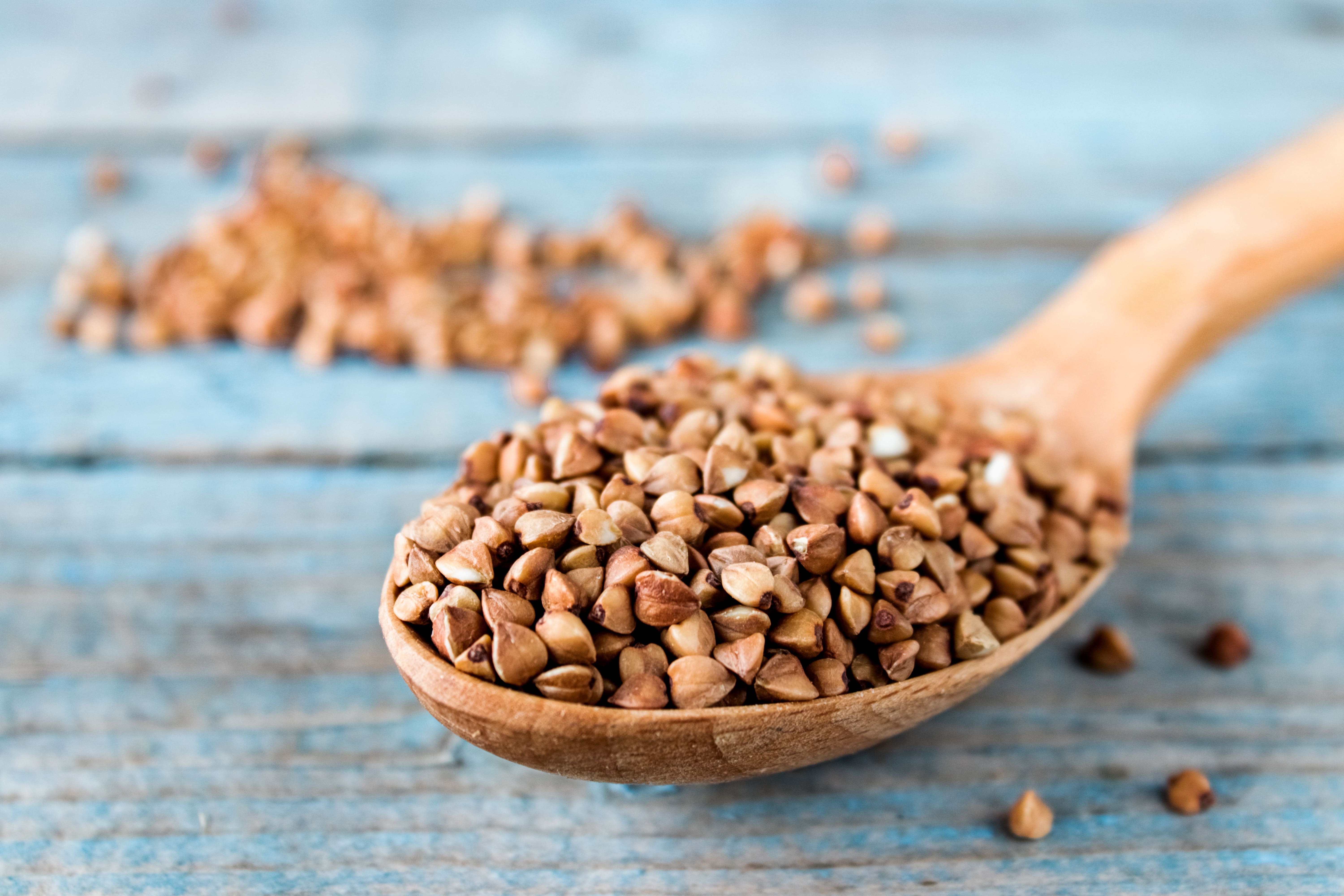Hey, Buckwheat!
Introducing a tiny, mighty seed with a confusing name (hint: buckwheat is not wheat)

When I first heard the word ‘buckwheat’ I thought for certain this product was a grain. My suspicions were confirmed when I saw buckwheat soba noodles at the grocery store. Certainly, I thought, this is a type of wheat!
If you thought the same, you’re not alone and I’m sorry to say it, but we are flat wrong!
Despite its name, buckwheat is not a grain. According to the Whole Grains Council, “Buckwheat is one of the six pseudo grains that are not part of the Poaceae cereal family but are considered grains due to their similar uses from a culinary and nutritional perspective.”
Buckwheat is a seed that is part of the smartweed family, which includes buckwheat and vegetables like rhubarb and sorrel. It is grain-free and naturally gluten-free but because it can be cooked similar to quinoa, rice, and oats, it gets a pseudo grain treatment.
Buckwheat was first grown in China in 4000 BCE and became popular in America in the late 1800s as flour and for animal feed. In the U.S. George Washington and Thomas Jefferson were early growers of buckwheat and recognized the benefit to their crop rotations. In the 1970s gluten-free bakers fell in love with buckwheat and its popularity in the U.S. began to rise.
When it comes to nutrition, buckwheat is a powerhouse! It is a complete protein, with all 9 essential amino acids, plus it is nutrient rich, known for its phosphorus, B vitamins (both riboflavin/B2 and niacin/B3), and is packed with magnesium, copper, and manganese.
But it’s not just buckwheat’s nutrition that makes it a star, farmers love to grow buckwheat because it makes their soil healthier. Buckwheat is a climate-smart, inherently regenerative, pollinator-friendly cover crop that suppresses weeds, makes phosphorus more available in the soil, and increases biodiversity.
All these things enable agriculture to be part of the solution to climate change through an increasingly popular, ancient form of agriculture called Regenerative Agriculture, which is something we support and will talk about a lot more here.
Buckwheat plants produce seed faster than any other grain crop so places with short growing seasons, like North Dakota, Minnesota and New York, all grow buckwheat very well. At BAM, we source our buckwheat from North America, but it also grows in China and Russia where it s quite popular.
Because of all these great benefits, plus the fact that buckwheat is delicious, we couldn’t think of a better ingredient to use in a plant-based milk.